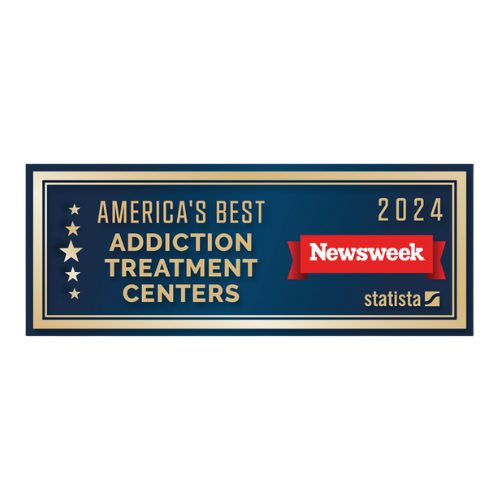When people think of the word addiction, the often thing that often comes to mind is drugs and alcohol. While drug and alcohol addiction should indeed get the focus and attention it needs, there are other addictions that exist and need focus. These include problem behaviors such as gambling, overeating and hypersexuality. Chemical addiction and behavioral addiction share common ground, but are they one in the same?
The term “addiction” is increasingly used to refer to a range of excessive behaviors, such as gambling, video game playing, eating disorders, sports and physical exercise, media use, pornography, sex addiction, pathological working, and compulsive criminal behavior. Although such behavioral addictions do not involve a chemical intoxicant or substance, a group of researchers has posted that some core indicators of behavioral addiction are similar to those of chemical or substance addiction. At present, researchers emphasize that in order to make a diagnosis of behavioral addiction, functional impairments must be present at work, in social relationships, or in other social situations.
What is Chemical Addiction
Chemical addiction is a progressive condition in which people become addicted to drugs of abuse such as alcohol, tobacco, pain killers and illicit drugs such as cocaine and heroin. Chemical addiction is marked by an increased tolerance to a substance (needing to take more of a substance in order to achieve the desired effect). Chemical addiction is also marked by an individual experiencing increased and intense physical and psychological cravings for their drug of choice. Additionally, people addicted to drugs and alcohol can experience painful and uncomfortable withdrawal symptoms if they try to quit using their drug of choice altogether.

Although the terms “Substance Addiction” and “Behavioral (or Process) Addiction” describe two types of addiction, they are similar in many ways. Primarily the difference is that addiction to a physical drug carries the additional risk of physiological harm as a consequence of the substance ingested.
Both classes of addiction create changes in the brain and cause similar harm to a person’s social and emotional life, and the lives of those around them. All addictions, whether Behavioral Addictions or Substance Addictions involve similar malfunctions in the original, normal, neuro-chemical Reward and Gratification Systems of the brain that we are all born with. Therefore, all addiction is fundamentally a mental health issue, no matter what type of addiction is involved.
What is Behavioral Addiction?
Behavioral addictions are defined as a person becoming addicted to certain activities. Also known as process addictions, behaviors that people can become addicted to include gambling, shopping, video games, eating, and sex. People who deal with behavioral addictions engage in compulsive or obsessive behavior in order to relieve unresolved psychological distress. This can stem from traumatic events, bullying, sexual and physical abuse, and other events. While behavioral addictions may not be considered as an “addiction” by the same, there is a growing body of evidence that shows that both types of addictions share similar roots.
Similarities Between Chemical and Behavioral Addiction
Whether it is through substances or activities, the brain sees the addictive behavior from both as one in the same. Both addictions activate the same neural pathway referred to as the reward pathway. The reward pathway involves several brain locations including the prefrontal cortex, the nucleus accumbens and the VTA (ventral tegmental area). This reward system was designed to promote and reward those behaviors needed for humans to survive.
The reward system also is responsible for reinforcing behaviors that are deemed pleasurable and good. Unfortunately, this pathway is unable to distinguish between healthy and unhealthy behaviors. When a pleasurable activity occurs, the reward pathway is flooded with dopamine which is a neurotransmitter that allows people to feel euphoria and calm. When the behavior is reinforced, the activity itself (the drug or process behavior) takes over the dopamine production. Soon, maladaptive behavior is tied to happiness and pleasure.
Differences Between Chemical and Behavioral Addiction
There are a couple of major differences regarding both addictions. First, behavioral addictions cannot always be resolved using the abstinence-based model that is commonplace in drug treatment. The reason is that people cannot simply stop eating, having sex or shop. When a person is struggling with a behavioral addiction, treatment has to center on healthy ways to moderate their behavior so it doesn’t take over their life and negatively impacts their relationships with others. Secondly, people who have behavioral addictions, for the most part, don’t show physical symptoms (with eating disorders being an exception).

Since they don’t show physical withdrawal symptoms, behavioral addictions are easier to hide from others. Another thing seen with both forms of addiction is that people can often switch addictions. This is especially seen in those in recovery from substance abuse. Since recovering addicts no longer use drugs and alcohol, they may seek other behaviors that give them a similar rush.
It is never a moral weakness or a lack of willpower, or because someone is basically ‘no good’, ‘weak’, or ‘bad’.
Studies show, that if the brain activity of non-addicted people is compared to the brains of those who do have an addiction, the Reward Centers in the brains of addicted people are abnormally over-excited at the thought of receiving the desired reward, compared with the lower (normal) level of brain excitement experienced by non-addicted people.
Conversely, when the ‘reward’ is actually received by someone with an addiction, the Gratification, or Satisfaction Centers in the brains of addicted people are much less ‘pleased’ or satisfied, than for non-addicted people.
These 2 abnormal forces are recognized as primary causes driving addicts to lose control over their behavior:
vastly increased intensity of mental and emotional cravings the need for more and more of the drugs or activity to get the level of satisfaction that they crave.
It’s an overpowering and accelerating downward spiral that often leads to depression, shame, humiliation, isolation, and even suicide. Mentally, psychologically, and emotionally all addictive behaviors share these psychological qualities.
Many people find it difficult to understand why a person with a behavioral addiction doesn’t just stop doing the harmful activity, believing it not as difficult to control as drug addictions because there is no addictive substance involved.
Get Help Today
No matter the addiction, its effect on the individual and family are profound. In order to break the vicious cycle of addiction, it requires professional help and treatment programs that are effective, proven to work, and customizable to each person’s unique needs If you or a loved one are in need of treatment for a chemical addiction or a behavioral addiction, contact Hawaii Island Recovery today.
Hawaii Island Recovery
While it’s true that drug addiction produces additional physical chemical dependency from the drug itself, the neurochemical and psychological processes in the brain that drive both types of addiction are real, visible on brain scans, and basically the same.

Get Addiction Treatment!
If you or a loved one need help, call Hawaii Island Recovery toll-free right now.
866-390-5070 Hawaii Island Recovery
Hawaii Island Recovery 










